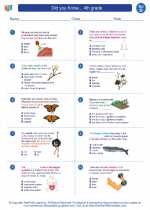Genus
In biological classification, a genus is a rank used in the biological classification of living and fossil organisms, as well as viruses, in biology. In the hierarchy of biological classification, genus comes above species and below family.
Characteristics of a Genus
- Grouping: A genus includes one or more species that are closely related and share common characteristics.
- Binomial nomenclature: Each genus is given a unique scientific name using binomial nomenclature, which consists of the genus name followed by the species name. For example, the genus Rosa includes species such as Rosa canina (dog rose) and Rosa chinensis (China rose).
- Taxonomic rank: Genus is a taxonomic rank used in the biological classification of organisms.
Study Guide for Genus
When studying the concept of genus, it is important to understand the following key points:
- Define genus and its position in the hierarchy of biological classification.
- Understand the concept of binomial nomenclature and how genus and species names are used to scientifically classify organisms.
- Learn to differentiate between different genera and recognize the unique characteristics that define each genus.
- Explore examples of different genera and the species they encompass.
- Practice classifying organisms into their respective genera based on their shared characteristics.
◂Science Worksheets and Study Guides Fourth Grade. Did you Know... 4th grade
Study Guide Did you Know... 4th grade
Did you Know... 4th grade  Worksheet/Answer key
Worksheet/Answer key Did you Know... 4th grade
Did you Know... 4th grade  Worksheet/Answer key
Worksheet/Answer key Did you Know... 4th grade
Did you Know... 4th grade  Worksheet/Answer key
Worksheet/Answer key Did you Know... 4th grade
Did you Know... 4th grade 

 Worksheet/Answer key
Worksheet/Answer key
 Worksheet/Answer key
Worksheet/Answer key
 Worksheet/Answer key
Worksheet/Answer key

The resources above cover the following skills:
Core Ideas for Knowing Science
Life Science
Organisms are organized on a cellular basis and have a finite life span.